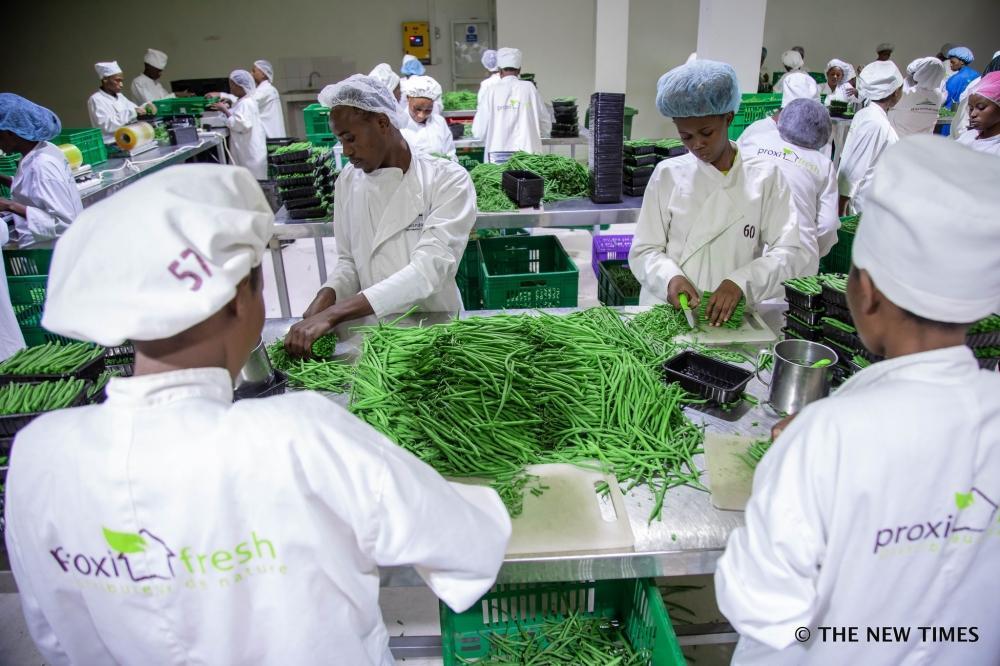Africa-Press – Rwanda. Following two consecutive years of low agricultural productivity, with growth below two percent due to unfavourable weather conditions, the agriculture sector’s performance increased by 5.3 percent in 2024. This was primarily driven by increase in food production and livestock, according to the newly launched Rwanda Economic Update by the World Bank.
The report titled “Modernizing Agriculture to Accelerate Structural Transformation in Rwanda” examines the country’s economic performance in 2024 with highlight on the agriculture sector and labour market.
Peace Aimee Niyibizi, the World Bank Senior Country Economist for Rwanda, said, “Over the last decade, agricultural income has significantly increased, reaching $419 million. Production has diversified beyond traditional cash crops like coffee and tea to include high-value commodities such as vegetables and fruits.”
She noted that the sector still holds considerable potential to deliver higher growth, better employment opportunities and increased foreign exchange earnings.
Here are five priority areas of investment to boost productivity and job opportunities in the sector as highlighted in the report:
Workforce skillset
Agriculture remains Rwanda’s largest employer, with over 40 percent of labour market, meaning 1.8 million people, yet improving job quality and workforce skills is essential for long-term growth, according to the report.
A large portion of the workforce in the sector has low educated workers with 65 percent having no formal education. Consequently, they fall under the category of lower-income workers.
Underscoring the need for skills development to improve productivity and wages, the report says: “Strengthening training in agribusiness, food processing, and mechanization will be crucial to expanding employment opportunities in agriculture and improving income levels.”
Opportunities in climate-oriented solutions
Extreme weather events, including droughts, floods, soil degradation, and shifting rainfall patterns, affect crop yields and livestock production.
Researchers assert that addressing these risks through climate-smart practices, improved soil management, and expanded irrigation will be crucial to ensuring long-term resilience.
Agro-processing industry potential for employment
Beyond direct agricultural production, Rwanda’s agro-processing industry presents significant employment opportunities.
The report sheds light on investments in tea and coffee processing, cassava production, and horticulture, which require skilled workers in food technology, packaging, distribution, and branding.
Additionally, increasing demand for cold-storage facilities, post-harvest infrastructure, and precision farming solutions will drive job creation in logistics, maintenance, and agro-engineering.
Developing technical certification programs for agricultural equipment repair, irrigation system maintenance, and solar-powered farm technology could further strengthen employment prospects, it adds.
Despite the progress, Rwanda still lags in agro-processing in the region. Kenya, Uganda, and Tanzania, have more developed value chains due to stronger investments.
Agric-focused financial products
The financial sector plays a critical role in agricultural growth, with emerging opportunities in agricultural insurance, credit risk assessment, and finance for farm expansion.
Strengthening financial literacy and training rural entrepreneurs in farm management and value-chain financing will be key to unlocking new business opportunities in the sector, according to the report.
Investments in Agritech solutions
Rwanda has fully digitalized the supply chain for subsidized inputs through the Mobile Ordering Processing Application (MOPA) and Smart Nkunganire System (SNS), linking farmers to suppliers and improving efficiency.
However, digitalization and Agritech solutions remain underutilized, despite their potential to improve market access, financial inclusion, and productivity in the sector.
The low level of adoption is mainly due to limited digital literacy, infrastructure constraints, and high costs.
“The development of AI-powered advisory tools and precision agriculture applications could further improve input efficiency, weather forecasting, and pest management, but widespread adoption depends on affordable access to digital tools and targeted farmer training programs,” the report says.
Beyond these investments, it was noted that agriculture remains a key driver of Rwanda’s trade and economic growth.
With projections of food demand to double from $6.5 billion in 2020 to $13 billion by 2040, fuelled by population growth, urbanization, and shifting consumption patterns toward livestock, horticulture, and processed foods, this represents significant opportunities for job creation, higher value-added activities, and the emergence of new food-related services.
For More News And Analysis About Rwanda Follow Africa-Press






